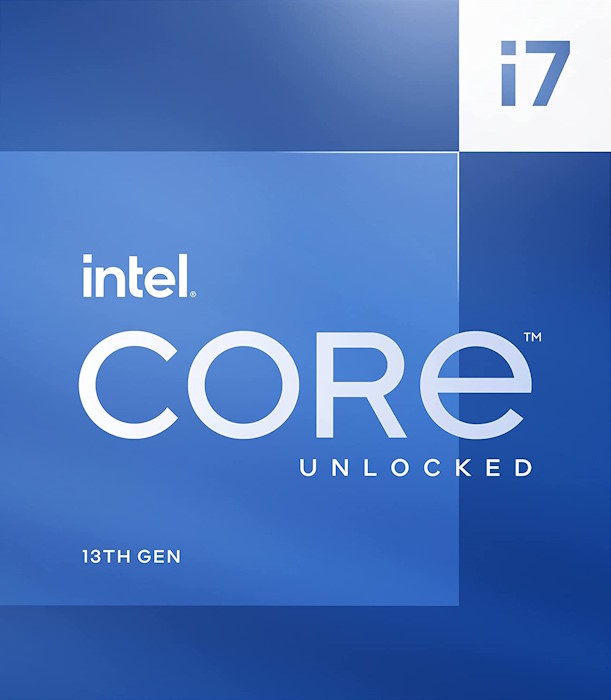Best Processors with PCI-E 5.0 and DDR5 Support
We independently test the products and technologies that we recommend.


| Telemart.ua | 6 449 ₴ | To Store |
| Artline.ua | 5 865 ₴ | To Store |
| MTA.ua | 5 999 ₴ | To Store |
| Click.ua | 5 443 ₴ | To Store |
| Nkt.ua | 5 673 ₴ | To Store |
The AM5 platform was released back in 2022, but even a couple of years later, the cost of hardware for it remains high. While many gamers on a budget continue to build systems on the good old AM4, one of the most affordable options for the new platform has long been the Ryzen 5 7500F. To attract attention to the more modern platform, AMD released an even more affordable option in 2024 in the form of the Ryzen 5 7400F.
The Ryzen 5 7400F has six Zen 4 cores with multithreading support, 32 MB of L3 cache, and a TDP of 65 W. The "F" suffix means that there is no integrated RDNA 2 graphics here — the chip is strictly for tech who install a discrete video card. Compared to the Ryzen 5 7500F, the new product is slightly cut in frequencies: in boost, it produces 4.7 GHz versus 5 GHz in its older brother. A sacrifice of 300 MHz seems like a trifle, especially when the price is almost $50 lower. In addition, if you are ready to dig into the BIOS, manual overclocking will easily squeeze almost the same flow Rate out of the 7400F.
The savings, however, affected not only the graphics. AMD replaced the solder with thermal paste, which caused panic at the start of sales - they say it heats up like a top-end Core i9 with liquid cooling. In reality, everything is calmer: in games with a good cooler, the temperature is around 75 - 80 ° C, about the same as the 7500F. At the same time, in single-threaded Cinebench R23 tests, the hero of the review lags behind the older Ryzen 5 by an average of 5%, and in multi-threaded tests the difference tends to zero. In general, the Ryzen 5 7400F is a godsend for budget gamers. If you are still confused by the need for overclocking and rumors about heating, then you can pay a little extra for the Ryzen 5 7500F or Ryzen 5 7600X.

The AMD Ryzen 7 7700 is an 8-core, 16-thread processor from the Ryzen 7000 series based on the Zen 4 architecture. Released in late 2022 as part of AMD's transition to the AM5 platform, it is a slightly slower version of the Ryzen 7 7700X with lower TDP and power consumption. It is aimed at gamers, content creators, and anyone looking for a powerful mid-range chip without paying the premium price of the top-end Ryzen 9 series or gaming models with 3D V-Cache.
In terms of price/flow Rate ratio, the Ryzen 7 7700 is one of the most balanced desktop processors of 2024-2025. High frequencies and IPC gain (+13% to Zen 3) provide single-threaded power at the level of top processors of the "ninth" series. Given the reduction in prices for DDR5 memory and AM5 motherboards, the Ryzen 7 7700 can be an excellent option for a moderately powerful and versatile build on the updated AMD platform. Unlike the older model, the Ryzen 7 7700X hero of this review is equipped with a boxed Wraith Prism cooler, which surprisingly copes well with cooling the "stone" in normal mode with moderate auto-overclocking. Although, for overclocking and PBO (Precision Boost Overdrive), it is still better to buy a tower like the Noctua NH-U12S or a 240 mm liquid cooler.
In real-world tests (such as Cinebench R23), the Ryzen 7 7700 scores around 1,800 points in single-thread and 18,000 in multi-thread — a decent result for its category. In multi-threaded scenarios (rendering, video encoding), it outperforms the Intel Core i5-13600K by an average of 10-15%, but is slightly inferior to the i7-13700K. And in games, the Ryzen 7 7700 lags slightly behind the Ryzen 7 7800X3D with its 3D cache. And this is one of the most powerful, if not the most powerful gaming processor of recent years. At the same time, the Ryzen 7 7700 lags behind by a rather modest 10-15%, with an almost twofold difference in price.

| Telemart.ua | 10 599 ₴ | To Store |
| MTA.ua | 10 199 ₴ | To Store |
| Click.ua | 9 489 ₴ | To Store |
| FOXTROT.UA | 10 240 ₴ | To Store |
| Flick І Все для геймерів | 10 379 ₴ | To Store |
The Ryzen 5 9600X is the junior processor in the new 900 series based on the Zen 5 architecture, which AMD introduced in 2024. Unlike Intel, which abandoned Hyper-Threading technology, AMD continues to develop multithreading, so the processor is equipped with 6 physical and 6 virtual cores with a maximum clock frequency of 5.4 GHz. It is designed for the AM5 platform, supports PCI-E 5.0 and DDR5 with a frequency of up to 5600 MHz (or higher when overclocked).
When developing Zen 5, AMD engineers reworked the architecture, improving energy efficiency and optimizing the chiplet layout. However, at the start of sales, the Ryzen 5 9600X was disappointing - flow Rate in games and tests was lower than expected due to raw firmware motherboards and problems with Windows. A few months later, AMD and Microsoft released updates that revealed the chip's potential.
Compared to its predecessor, the Ryzen 5 7600X, the new product from AMD is on average 10% faster in synthetic tests, and about 5% faster in games. The acceleration of work with applications based on artificial intelligence is truly impressive - for example, in Stable Diffusion, the speed increase is slightly more than 50%. In the case of Intel, the most interesting competitor is the Core i5-13600K, which wins in multi-threaded processing, but is inferior in terms of energy efficiency and maximum frequencies. Considering the price reduction after the rough announcement, we can say that AMD has managed to quite adequately update the model range with support for more relevant hardware.

| Telemart.ua | 10 999 ₴ | To Store |
| MTA.ua | 9 999 ₴ | To Store |
| Click.ua | 10 143 ₴ | To Store |
| FOXTROT.UA | 10 958 ₴ | To Store |
| Flick І Все для геймерів | 11 109 ₴ | To Store |
In recent years, Intel has been accustomed to collecting tons of criticism, but after the invisible hand of the market adjusts prices, the attractiveness of Intel's solutions increases significantly. The hybrid models of the 13th and 14th generations turned out to be especially successful with an excellent balance of price, flow Rate and energy efficiency, plus support for multithreading (unlike the new Core Ultra without SMT). One example of such a well-balanced processor is the Core i5-14600K.
So, the Core i5-14600K is a hybrid processor from the 14th generation Intel Raptor Lake Refresh, equipped with 14 cores and support for 20-thread processing. Of these, 6 productive cores with operating frequencies of 3.5 - 5.3 GHz and 8 efficient cores with a maximum frequency of 4 GHz. It works on the LGA 1700 socket and supports both current types of RAM (DDR5 and DDR4), increasing the flexibility of the assembly. In general, it is good for both games and work tasks.
In terms of specifications and flow Rate, this is a mid-range "stone" that outperforms many more expensive Core i7 chips of the 12th and 13th generations and is almost as good as modern chips from AMD and Intel. At the same time, it is not as hot as the older Alder Lake and Raptor Lake, and is quite successfully cooled by a classic tower. The only thing to consider is the fact that Intel loves to change platforms, the LGA 1700 socket was released back in 2020 and belongs to the previous generation, which may complicate the platform upgrade in the future.

After rebranding the processor line from Intel Core to Core Ultra, Intel finally has a wide selection of relevant mid-range models for different platforms. Among them, the hybrid processors of previous generations Intel Core i7-13700K and Core i5-14600K stand out noticeably, as well as the newer Core Ultra 5 225. If we take into account the price/flow Rate ratio, then the most interesting option, in our opinion, remains the oldest of this trio - Core i7-13700K.
The Intel Core i7-13700K processor is a powerful 16-core 13th generation chip (Raptor Lake) with a hybrid architecture (8 productive P-cores + 8 efficient E-cores) and support for multi-threaded processing. The base frequency of the P-cores is 3.4 GHz with a boost to 5.4 GHz, the E-cores operate at 2.5 GHz with an acceleration of up to 4.2 GHz. The chip is compatible with the LGA 1700 socket, supports both current DDR4 and DDR5 RAM formats, as well as the PCI-E 5.0 interface, which is necessary for connecting modern video cards and drives.
Compared to the modern Core Ultra 5 225, the hero of the review wins due to multithreading, allowing it to process 24 threads instead of 10. And compared to the Core i5-14600K, the i7-13700K has more cores, higher clock speeds and, on average, 15-20% higher flow Rate in resource-intensive tasks. As a result, this is a powerful processor for both gaming and working with “heavy” professional applications. The only downside is that the LGA 1700 platform is not the newest, which limits the choice of processors for future upgrades. Well, under peak load, the chip’s power output can reach 250 W, so serious cooling is needed.
Articles, reviews, useful tips
All materials

























